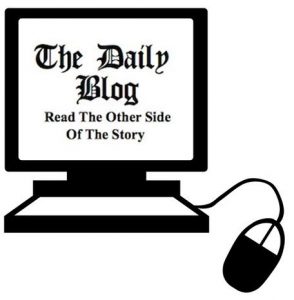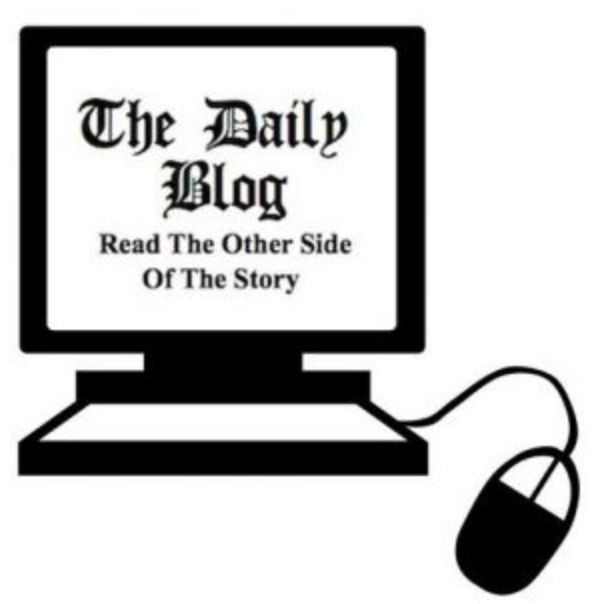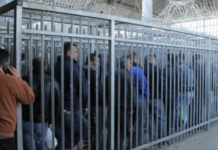
Announce protest actions, general chit chat or give your opinion on issues we haven’t covered for the day.
Moderation rules are more lenient for this section, but try and play nicely.
EDITORS NOTE: – By the way, here’s a list of shit that will get your comment dumped. Sexist language, homophobic language, racist language, anti-muslim hate, transphobic language, Chemtrails, 9/11 truthers, climate deniers, anti-fluoride fanatics, anti-vaxxer lunatics and ANYONE that links to fucking infowar.






According to this scientific study the common (PCR) throat swab test we are getting will show negative if test is taken 21 days after the infection, so get a test as soon as you get any symptoms if you want to show positive to having covid 19.
We should request Government use the new gold standard “serology antibody test” by Roche if your infection was after 21 days, otherwise your result using the (PCR) swab test will show a false negative.
https://www.acpjournals.org/doi/10.7326/M20-1495
Negative result using PCR swab test will be 54% to 77%) on day 21.
Variation in False-Negative Rate of Reverse Transcriptase Polymerase Chain Reaction–Based SARS-CoV-2 Tests by Time Since Exposure
FREE
Lauren M. Kucirka, MD, PhD
,
Stephen A. Lauer, PhD
,
Oliver Laeyendecker, PhD, MBA
, … View all authors
Author, Article and Disclosure Information
https://doi.org/10.7326/M20-1495
Eligible for CME Point-of-Care
• Sections
Abstract
PDF
Tools
Share
Abstract
Background:
Tests for severe acute respiratory syndrome coronavirus 2 (SARS-CoV-2) based on reverse transcriptase polymerase chain reaction (RT-PCR) are being used to rule out infection among high-risk persons, such as exposed inpatients and health care workers. It is critical to understand how the predictive value of the test varies with time from exposure and symptom onset to avoid being falsely reassured by negative test results.
Objective:
To estimate the false-negative rate by day since infection.
Design:
Literature review and pooled analysis.
Setting:
7 previously published studies providing data on RT-PCR performance by time since symptom onset or SARS-CoV-2 exposure using samples from the upper respiratory tract (n = 1330).
Patients:
A mix of inpatients and outpatients with SARS-CoV-2 infection.
Measurements:
A Bayesian hierarchical model was fitted to estimate the false-negative rate by day since exposure and symptom onset.
Results:
Over the 4 days of infection before the typical time of symptom onset (day 5), the probability of a false-negative result in an infected person decreases from 100% (95% CI, 100% to 100%) on day 1 to 67% (CI, 27% to 94%) on day 4. On the day of symptom onset, the median false-negative rate was 38% (CI, 18% to 65%). This decreased to 20% (CI, 12% to 30%) on day 8 (3 days after symptom onset) then began to increase again, from 21% (CI, 13% to 31%) on day 9 to 66% (CI, 54% to 77%) on day 21.
Limitation:
Imprecise estimates due to heterogeneity in the design of studies on which results were based.
Conclusion:
Care must be taken in interpreting RT-PCR tests for SARS-CoV-2 infection—particularly early in the course of infection—when using these results as a basis for removing precautions intended to prevent onward transmission. If clinical suspicion is high, infection should not be ruled out on the basis of RT-PCR alone, and the clinical and epidemiologic situation should be carefully considered.
Primary Funding Source:
National Institute of Allergy and Infectious Diseases, Johns Hopkins Health System, and U.S. Centers for Disease Control and Prevention.
Tests for severe acute respiratory syndrome coronavirus 2 (SARS-CoV-2) based on reverse transcriptase polymerase chain reaction (RT-PCR) are often used to rule out infection among high-risk persons, such as exposed inpatients and health care workers. Hence, it is critical to understand how the predictive value changes in relation to time since exposure or symptoms, especially when using the results of these tests to make decisions about whether to stop using personal protective equipment or allow exposed health care workers to return to work. The sensitivity and specificity of PCR-based tests for SARS-CoV-2 are poorly characterized, and the “window period” after acquisition in which testing is most likely to produce false-negative results is not well known.
Accurate testing for SARS-CoV-2, followed by appropriate preventive measures, is paramount in the health care setting to prevent both nosocomial and community transmission. However, most hospitals are facing critical shortages of SARS-CoV-2 testing capacity, personal protective equipment, and health care personnel (1). As the epidemic progresses, hospitals increasingly have to decide how to respond when a patient or health care worker has a known exposure to SARS-CoV-2. Although 14 days of airborne precautions or quarantine would be a conservative approach to minimizing transmission per guidelines from the Centers for Disease Control and Prevention (2), this is not feasible for many hospitals given starkly limited resources.
As RT-PCR–based tests for SARS-CoV-2 are becoming more available, they are increasingly being used to rule out infection to conserve scarce personal protective equipment and preserve the workforce. When exposed health care workers test negative, they may be cleared to return to work; similarly, when exposed patients test negative, airborne or droplet precautions may be removed. If negative results from tests done during the window period are treated as strong evidence that an exposed person is SARS-CoV-2–negative, preventable transmission could occur.
It is critical to understand how the predictive value of the test varies with time from exposure and symptom onset to avoid being falsely reassured by negative results from tests done early in the course of infection. The goal of our study was to estimate the false-negative rate by day since infection.
Methods
Source Data
As part of a broader effort to provide critical evaluation of emerging evidence, the Novel Coronavirus Research Compendium at the Johns Hopkins School of Public Health did a literature review to identify preprint and peer-reviewed articles on SARS-CoV-2 diagnostics (3). Investigators searched PubMed, bioRxiv, and medRxiv using a strategy detailed in Supplement . The search was last updated on 15 April 2020. From the broader search, we identified articles that provided data on RT-PCR performance by time since symptom onset or exposure using samples derived from nasal or throat swabs among patients tested for SARS-CoV-2. Inclusion criteria were use of an RT-PCR–based test, sample collection from the upper respiratory tract, and reporting of time since symptom onset or exposure. We excluded articles that did not clearly define time between testing and symptom onset or exposure. We identified 7 studies (2 preprints and 5 peer-reviewed articles) (4–10) with a total of 1330 respiratory samples analyzed by RT-PCR. Figure 1 summarizes the source data. One study by Kujawski and colleagues (10) provided both nasal and throat samples for each patient; we used only the nasal samples in our analysis.
The surveillance state is progressing FAST:
https://www.stuff.co.nz/national/politics/122366243/coronavirus-hundreds-of-people-in-rotorua-will-test-covidcard-bluetooth-device
Comments are closed.